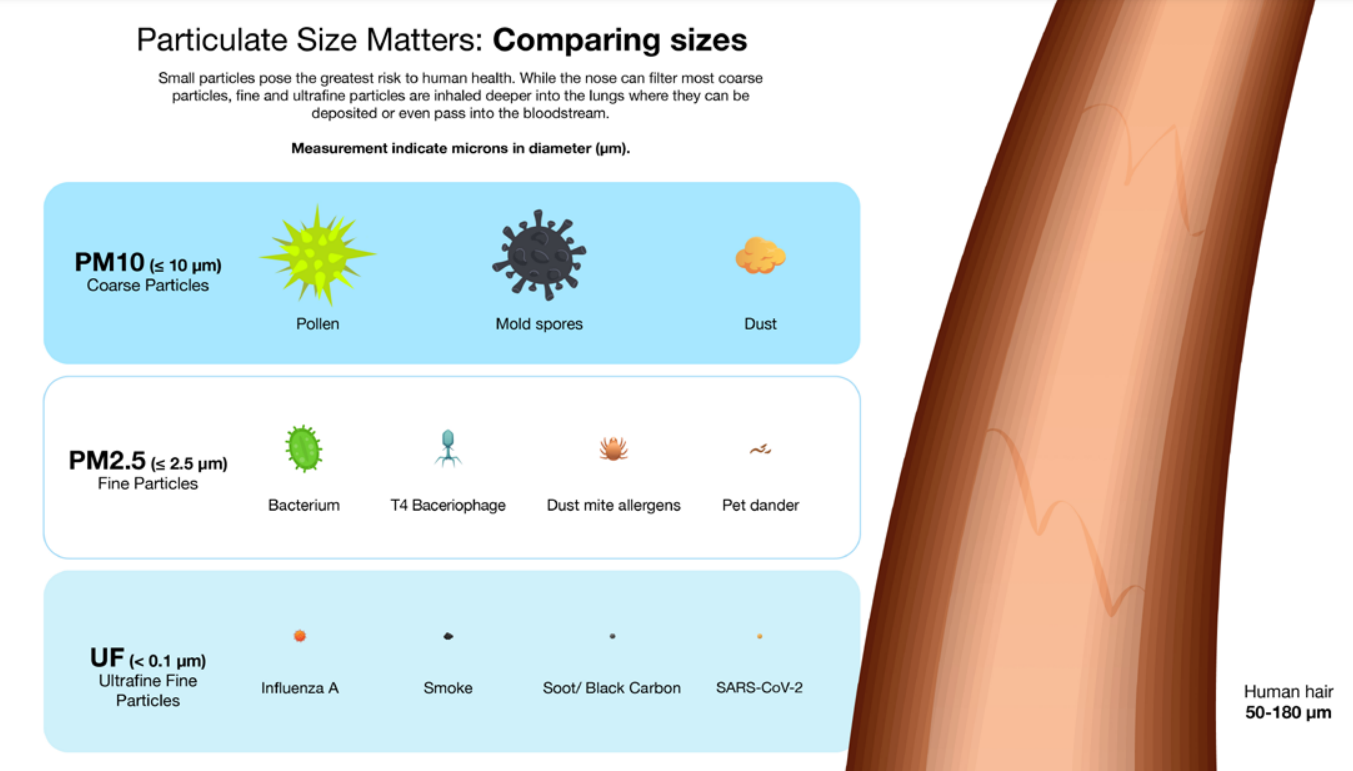West Bengal
Kolkata Air Toxicity
- 08 May 2025
- 5 min read
Why in News?
A new study by Kolkata-based Bose Institute revealed that PM 2.5 becomes significantly more toxic when pollution levels exceed 70 micrograms per cubic metre of air.
Key Points
- Key Findings of the Study:
- A new long-term study conducted in Kolkata revealed that PM2.5 toxicity spikes sharply when pollution levels cross 70 micrograms per cubic metre (µg/m³).
- According to the researchers, the toxicity continues to rise until it stabilises around 135 µg/m³.
- Study Duration and Area Covered:
- The analysis covered seven years of data (2016–2023).
- Air samples were collected from eastern Kolkata and the northern and southern zones of the city.
- Violation of National Standards:
- India's national PM2.5 standard is 60 µg/m³ (24-hour average).
- From October to February, this threshold was breached on about 75% of winter days in Kolkata's metropolitan region.
- Health Hazards of PM2.5:
- PM2.5 particles can penetrate deep into the lungs, causing asthma, COPD, cardiovascular issues, and pulmonary fibrosis.
- The toxicity is linked to oxidative stress, which can damage human cells through molecules like peroxides, hydroperoxides, and hydroxyls.
- Scientific Insight on Toxicity:
- Researchers explained that toxicity rises due to chemical components from biomass and solid waste burning, with vehicular emissions contributing to a lesser extent.
- The study was limited to winter months, when PM2.5 levels peak in the Indo-Gangetic Plain.
- Emission Trends Post-NCAP:
- Under the National Clean Air Programme (NCAP) launched in 2019, Kolkata received over Rs 636 crore between 2019 and 2023.
- Post-NCAP, emissions declined from:
- Vehicles by 33%
- Industries by 39%
- Road dust by 42%
- Biomass Burning Remains Unchecked:
- Despite NCAP, there was no notable reduction in biomass and waste burning emissions.
- The study attributes this to:
- Open-air burning of dry leaves in winter
- Widespread use of biomass for cooking among economically weaker sections due to high LPG refill costs.
- These practices remain largely unsupervised, contributing to continued high air toxicity.
National Clean Air Programme (NCAP)
- It was launched by the MoEFCC in January 2019.
- It is the first-ever effort in the country to frame a national framework for air quality management with a time-bound reduction target.
- It seeks to cut the concentration of coarse (particulate matter of diameter 10 micrometer or less, or PM10) and fine particles (particulate matter of diameter 2.5 micrometer or less, or PM2.5) by at least 20% in the next five years, with 2017 as the base year for comparison.
- The plan includes 102 non-attainment cities, across 23 states and Union territories, which were identified by the Central Pollution Control Board (CPCB) on the basis of their ambient air quality data between 2011 and 2015.
- Non-attainment cities: These are those that have fallen short of the National Ambient Air Quality Standards (NAAQS) for over five years.
Particulate Matter (PM)
- Particulate matter, or PM, refers to a complex mixture of extremely small particles and liquid droplets suspended in the air. These particles come in a wide range of sizes and can be made up of hundreds of different compounds.
- PM10 (coarse particles) - Particles with a diameter of 10 micrometres or less.
- PM2.5 (fine particles) - Particles with a diameter of 2.5 micrometres or less.



.jpg)




